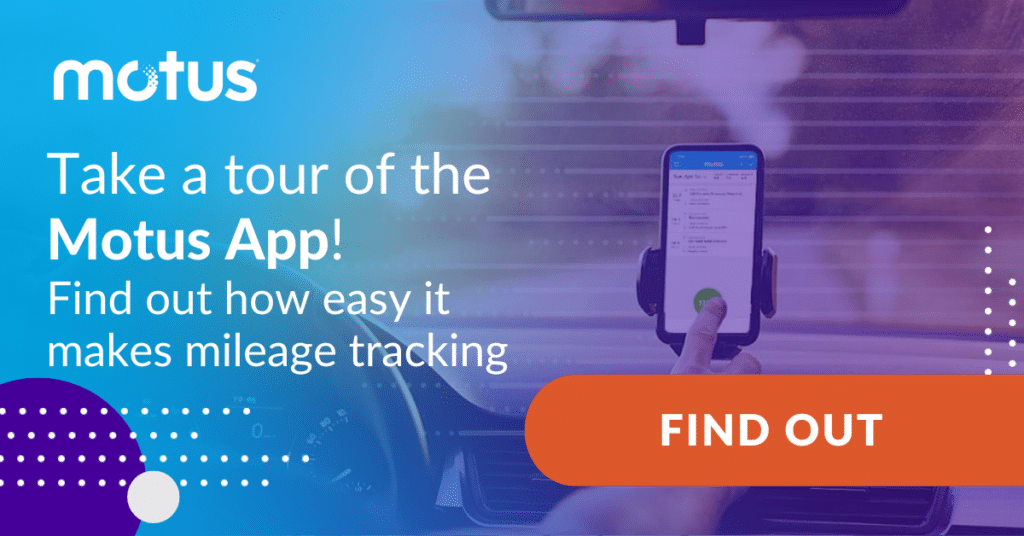As companies transition their vehicle programs, ensuring a seamless change is crucial for both the employees driving and the company. It’s understandable that drivers will have questions during this transition period, whether it’s about reimbursement rates, mileage tracking, or just the overall process.
At Motus, we understand the importance of addressing concerns and helping answer any questions that drivers have. That’s why we have an extensive Support Team to help with any questions that may arise. Whether they’re a seasoned driver or new to the role entirely, our teams are available to answer any questions along their journey, ensuring a smooth transition when employees hit the road. So, what are some commonly questions that drivers have when getting started? Let’s dive in.
How is my fixed and variable rate calculated?
A drivers Fixed and Variable Rate (FAVR) reimbursement is intended to be fair, accurate, and individualized of incurred costs. Given this, there are various components that can determine the calculation of costs:
The Fixed Cost of a driver’s reimbursement is time-based and incurred over the course of the given year and is calculated based on the standard automobile using:
- Your employer’s required insurance premiums (Based on the driver’s home zip code)
- License & Registration Fees (Based on the driver’s home zip code)
- Taxes (Based on the MSRP of the standard automobile)
- Depreciation (Based on your annual expected business mileage)
The Variable Costs are based on distance and are calculated based on:
- Maintenance and tires (Based on the driver’s annual expected business mileage)
- Fuel Costs (Based on the driver’s metropolitan statistical area)
I started my Motus account halfway through the year. Do I still have to drive the IRS minimum requirement of 5,000 annual business miles?
This is a great question! If a driver joined the program after the start of the tax year, the business mileage would be prorated based on the number of active days in the tax year.
Let’s say in an example you’ve been active for 60 days; the prorated mileage requirement would equal to 822 business miles. The quick calculation would be to take the 5,000 miles divided by 365 days in the calendar year then multiply by the number of days active on the program.
Will the Motus app continue to track if I don’t have cell service?
The short answer is yes! Your cell coverage and GPS are completely different networks. The Motus App will log your actual route based on the GPS signal, so if you happen to lose cell signal you can rest assured that the trips will be in your log waiting for a good data connection. Once you have established a good cell phone connection the trips will automatically save upon opening the app.
If I get a new car, do I get more money back than an older car?
It’s important to know that when a driver’s fixed reimbursement is calculated, it is based on a standard automobile and not the driver’s specific vehicle. The standard automobile is the vehicle that a driver’s employer determines that they can complete their roles and responsibilities effectively.
Since the fixed reimbursement is based on the standard automobile, the rate would not increase or decrease depending on if you purchased a newer or older vehicle.
I’m out of compliance because my vehicle is too old. What is the penalty? Do I still need to submit mileage each month?
Another great question! If a driver’s vehicle is being flagged because it is too old, that means that they are not meeting all the requirements from the IRS to be eligible for a tax-free reimbursement. In situations where not all requirements are being met, a taxability test would be needed to determine if any portion of the reimbursement could be viewed as taxable income. If a driver is receiving a reimbursement higher than the IRS Safe Harbor Rate, that portion would be considered income.
To answer the question if drivers still need to submit mileage each month? The answer is yes, it’s important for drivers to continue submitting their mileage monthly for a few reasons:
- Reimbursements – Drivers who aren’t submitting mileage are not receiving the variable portion of their reimbursement
- Taxability – The results of the taxability test are based on how many miles are submitted by the driver. The higher the mileage, the higher the tax-free threshold will be which means less chance of (or less overall) taxable income.
Questions can come from anyone involved in the process of transitioning Vehicle Programs
Transitioning vehicle programs isn’t an adjustment for driving employees. It’s common for everyone involved in the process to have a question or raise a concern they may have. From HR teams managing the transition, to finance departments handling reimbursement logistics, there is a lot to navigate. It’s important to understand the broader impact of these changes so it can help ensure a smooth transition for all stakeholders involved.
That’s why we created this guide, to help business leaders understand what working with us looks like.









